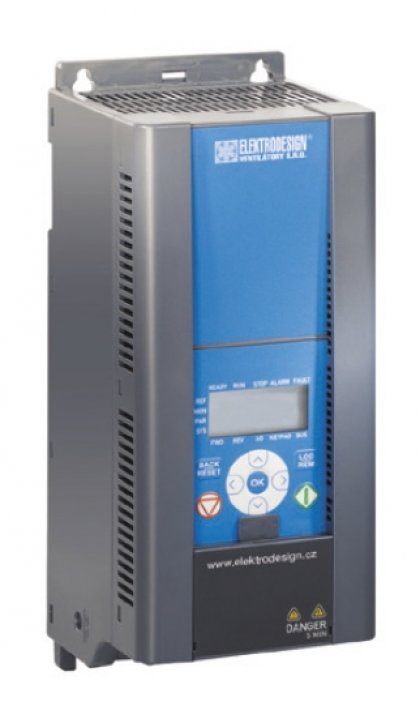If fan operation with electronic frequency converters or inverters is required, this must be specified in the order. The motors are subjected to considerable stress by the inverters and therefore require a special insulation design. When powered by inverters and converters, the magnetic circuits, windings and insulation are stressed by the high amplitudes of higher harmonic frequencies that are the product of pulse width modulation of the output voltage.
Motors controlled by 3-phase frequency converters require special insulated ball bearings. In inverters coupled to electric motors, the instantaneous sum voltage is not zero and the differential components are closed across the bearings and shaft to the grounded motor frame. These components cause microdischarges and thus alectroerosion of the balls and sliding paths. This can reduce the life of conventional bearings to about 25% of the original life.
Fan Running Currents
The running currents of asynchronous motors used in fans reach several times the rated current (approx. 2 to 10 times) depending on the armature design (internal or external, resistive, etc.), power and overall design. When operating with a frequency inverter (for normal fans) or with an inverter (for fire fans), the inrush current usually has no influence on the inverter sizing. Frequency converters and inverters usually contain "soft" start-up circuits. This means that the motor starts up gradually with reduced voltage and frequency so that the current does not exceed the inverter current. The rated motor parameters are usually critical for sizing.
Attention!
The use of inverters is only possible with motors approved by the manufacturer. Frequency converters cannot be used with high-temperature fans with dependent cooling (bearings, motor and other fan components are not cooled when the speed drops). Always consult the inverter or inverter supplier and the fan manufacturer for details on the suitability and safety of the inverter.
Operation of inverters, especially without filters at the inlet or outlet, may interfere with or damage other electrical or electronic equipment.
The power output of an electric motor whose speed is controlled by a frequency converter is lower due to the increased heating due to additional losses. Its permissible operating temperature is always lower than that specified by the manufacturer.


